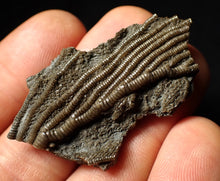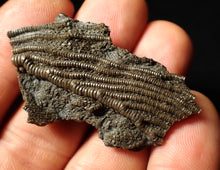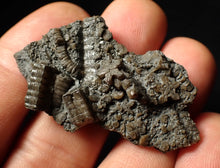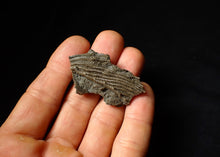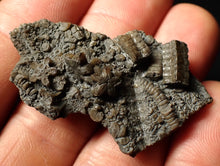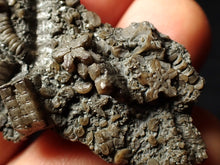
A stunning example of a crinoid fossil of the species Pentacrinites fossilis from the world-famous Jurassic Coast beach of Charmouth, Dorset UK.
The fossil measures 48 mm (1.9 inches) across and consists of a partial head of a crinoid with a crown of arms and pinnules preserved flowing over one another on top of multiple stem sections. It has an extremely high level of detail down to the smallest parts and is preserved in 3D. The back of the fossil also has some very detailed stem sections that show the distinctive five-pointed star-shaped cross section that gives this genus its name. This is a very fine example of this fossil type. Crinoid heads of this quality are rare. It is preserved in calcite and has been coated in a reversible (soluble) lacquer for protection.
Around 196 million years old, this fossil would make a wonderful addition to any collection.
Crinoids are echinoderms closely related to starfish and sea urchins, and have been around for many hundreds of millions of years. They still live today in the deep seas around the world.








